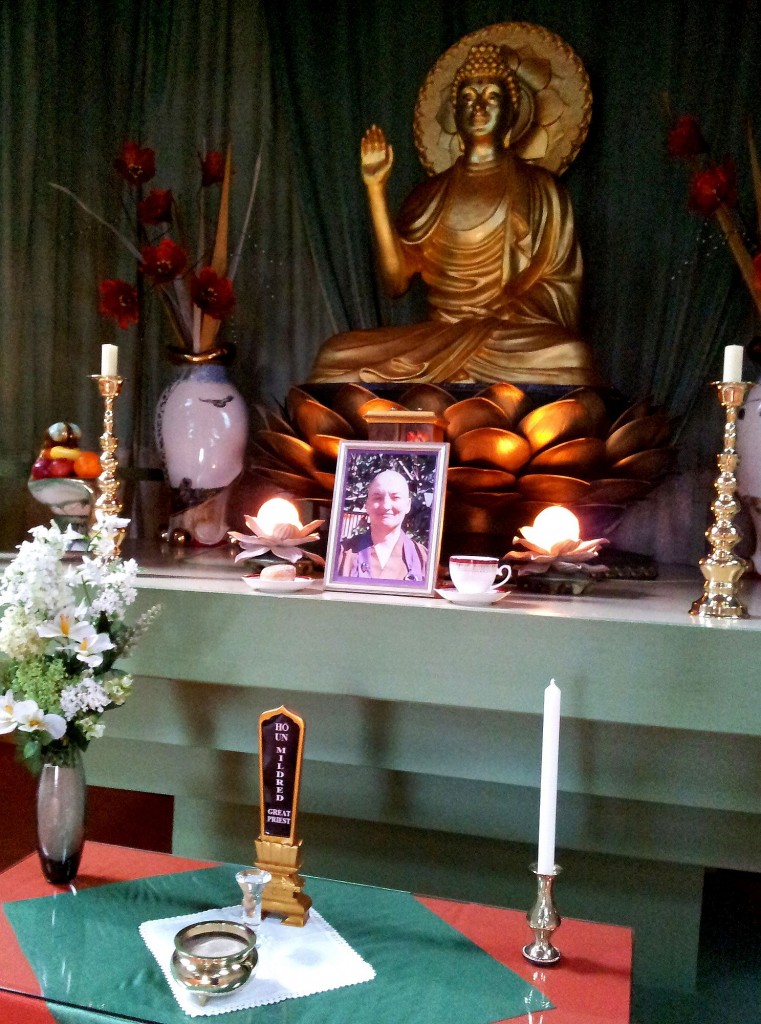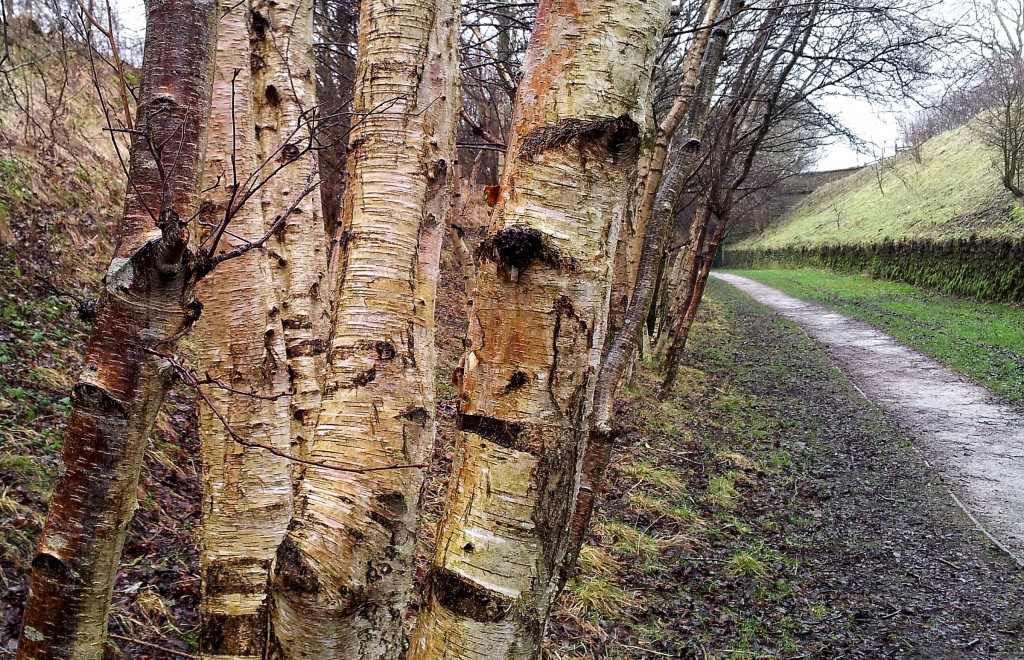
This afternoon a number of us gathered around the kitchen table at Throssel drinking tea and reminiscing about the late Reverend Mildred. Earlier the community had gathered in the ceremony hall for a ceremony in her memory it being ten years today since she died. She and I lived at the Reading Buddhist Priory in the early 1990’s and several people who read Jade will remember that time. She was a novice monk and it was my job as senior (and Abbot) to train her to be what’s termed in our tradition the Chief Junior of the temple. The CJ’s job is to make sure everything runs smoothly in the temple and instructs visitors and guests. Perhaps those of you who were around then would like to leave a comment to this post to add to the reminiscing.
One regular member of the priory once said she didn’t remember much, if anything, of the teaching I gave during Dharma talks. My heart sank. Then she followed up by saying how much she learnt from seeing how I dealt with sometimes tricky situations that came up between the Reverend and I. She assured me the learning was good. Thankfully! Living in such close quarters it was essential to deal with upsets as they arose and kindly too.
One time when I was traveling to visit meditation groups in the South, I’d do a three day tour, I picked up a mug for Rev. Mildred. I was fairly pleased with it and I think she appreciated it too. On the mug was written, To know me is to love me. I remember Rev. Mildred with huge gratitude for our time together, testing as it was for both of us at times.








